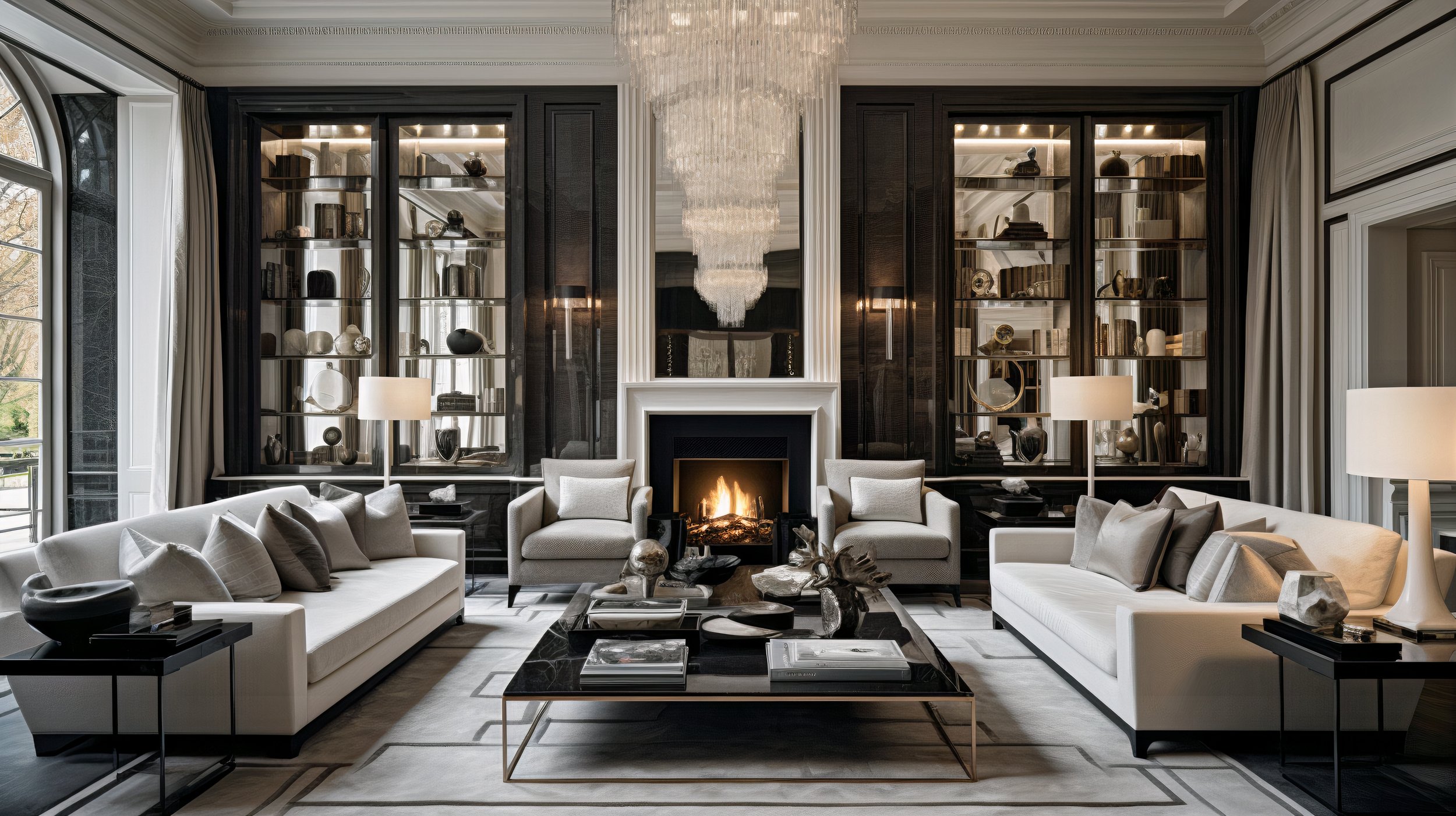Bridging Visions and Heritage: Mastering Listed Property Transformations
balancing aspirations with the unique challenges of refurbishing and preserving listed or heritage properties
Transforming listed properties in London into modern homes that align with the visions of discerning owners is a sophisticated art form at the intersection of architecture, history, and contemporary living. This art, practiced by dedicated architects and designers, such as those at ADOVA, involves a delicate balance between preserving the past and embracing the future.
The Historical and Cultural Significance of Listed Properties
Understanding the Legacy
London’s listed properties are more than just architectural structures; they are living narratives of the city’s rich history. These buildings, whether grand Victorian mansions, quaint Georgian townhouses, or imposing Tudor residences, represent a tangible connection to London's past. They stand as testaments to different eras, reflecting the architectural and societal changes over centuries. Preserving these buildings is crucial not just for maintaining the city’s architectural character but also for honouring and continuing its historical narrative.
Categories of Listing
In the UK, buildings are listed under three categories – Grade I, Grade II*, and Grade II – with each category dictating the level of alteration permissible. Grade I buildings, which account for only about 2.5% of listed buildings, are of exceptional interest, and often considered national landmarks. Grade II* buildings are particularly important buildings of more than special interest, and Grade II buildings, the majority of listed properties, are of special interest, warranting every effort to preserve them. Each category comes with its own set of challenges and opportunities for renovation and requires a tailored approach by architects and designers.
Legal Framework and Conservation
Navigating the Legal Landscape
The process of modifying a listed building in the UK is governed by a robust legal framework designed to protect these historical treasures. Any proposed external or internal changes require approval from local planning authorities, often in consultation with heritage organisations like Historic England. This process is crucial in ensuring that any alterations respect the building’s historical significance and contribute positively to its preservation.
Conservation Area Restrictions
Many listed properties fall within designated conservation areas, defined as places of special architectural or historical interest where the character and appearance need to be preserved or enhanced. Working within a conservation area adds a layer of scrutiny to any proposed changes, necessitating a more thoughtful and sensitive design and construction approach. The challenge here is to make meaningful modernizations that respect the conservation area’s overall character.
Challenges in Modernizing Historic Properties
Structural Challenges
The primary challenge in adapting historic structures to modern living standards is maintaining structural integrity while introducing contemporary amenities. These buildings were often constructed with techniques and materials no longer used, and sometimes their structural details are not fully documented. Introducing modern plumbing, electrical systems, climate control, and accessibility features like elevators involves intricate planning and innovative engineering solutions.
Aesthetic Considerations
Another significant challenge is ensuring that modern design elements are seamlessly woven into the historical fabric of the property. This involves a deep understanding of the property’s architectural style, materials, and original features. Designers and architects must find a balance between preservation and innovation, ensuring that any additions or alterations enhance the building’s historic character.
Technological Integration
Modern homeowners often desire the integration of smart home technology, which poses unique challenges in listed properties. The installation of modern technology must be done in a way that is both functional and discreet, ensuring that these installations do not disrupt the historical aesthetics of the property.
Space Utilisation
Adapting the internal layout of historic properties to contemporary needs is a complex task. Many historic properties were designed with a series of small, separate rooms, and transforming these into open-plan living spaces requires careful architectural planning. The challenge is to open up these spaces while preserving and highlighting original features such as fireplaces, moldings, and staircases.
Light and Ventilation
Modern living standards often require better natural light and ventilation than what was originally provided in historic buildings. Achieving this can involve complex redesigns, such as adding skylights or reconfiguring windows, always with a focus on maintaining the building’s historical integrity.
Sound Insulation and Modern Comforts
Upgrading the sound insulation and overall comfort of the building is another challenge. Historic buildings were not designed with modern acoustic insulation in mind, and retrofitting these features in a way that does not compromise the building’s aesthetics requires innovative solutions.
Balancing Modern Needs with Historic Integrity
Respecting Historic Fabric
When working on listed properties, the primary goal is to respect and preserve their historic fabric. This involves retaining original features and materials wherever possible. When replacements or alterations are necessary, they should be in keeping with the building’s historical character and made using traditional techniques where appropriate.
Sympathetic Extensions
Extensions to listed properties must be designed with a high level of sensitivity. They should complement the original building in terms of scale, proportions, and materials. Often, extensions need to be clearly distinguishable yet sympathetic to the original structure, requiring bespoke design solutions.
Integrating Contemporary Design
While respecting the historic character of the building, contemporary design elements can be introduced in a way that enhances the overall aesthetic. This can include modern furnishings, lighting, and interior finishes that contrast yet complement the historic elements of the property.
Landscape and Exterior Considerations
The exterior and landscape of listed properties are often as important as the buildings themselves. Renovations should consider the property in its entirety, including any gardens, courtyards, or outbuildings. These spaces should be designed to enhance the historical character of the property while providing modern usability and enjoyment.
The Role of Technology in Heritage Conservation
Innovative Use of Technology
Advances in technology have become instrumental in the realm of heritage conservation. Tools like 3D scanning, virtual reality, and augmented reality are revolutionizing how architects and designers approach the restoration and modification of listed properties. These technologies offer a precise and detailed understanding of a building’s structure, enabling designers to visualize changes and their impact accurately before any physical work begins. For example, 3D laser scanning has been pivotal in accurately mapping historical structures, allowing for precise restorations that maintain the integrity of the original architecture.
Sustainability in Renovation
The concept of sustainability is increasingly important in the renovation of listed properties. This movement is not just about using eco-friendly materials but also about ensuring that these historic buildings are energy-efficient and sustainable for future use. Incorporating sustainable practices, such as installing solar panels discretely, using reclaimed materials, and applying traditional methods for insulation, aligns contemporary environmental concerns with historical preservation. The challenge lies in integrating these modern sustainable practices without compromising the historical and architectural integrity of the listed buildings.
Collaboration and Negotiation
Working with Conservation Bodies
Successful renovations of listed properties require effective collaboration and negotiation with conservation bodies. This often involves presenting detailed plans that demonstrate how proposed changes respect and enhance the historical character of the building. For instance, in adding a contemporary extension to a Grade II listed building, the design must complement the original structure in terms of scale, materials, and style.
Engaging Local Communities
In many cases, listed properties are part of broader historical communities. Engaging with local residents and interest groups can be a crucial part of the planning process. This engagement ensures that changes are in keeping with the local character and sensitively handled. It’s about building trust and consensus, ensuring that the renovations are respectful to the community’s historical environment.
The Future of Listed Property Refurbishments
Emerging Trends
Looking ahead, there are several emerging trends in the renovation of historic properties. There is an increasing demand for integrating smart home technology in a discreet manner that does not disrupt the historical aesthetics. Owners are looking for ways to make their homes more energy-efficient and technologically advanced while respecting their historical significance. Another trend is the growing focus on sustainable practices in renovations, reflecting a broader societal shift towards environmental consciousness.
Challenges and Opportunities Ahead
One of the future challenges in the field of heritage property renovation is the need for skilled craftsmanship. The restoration of historical features often requires traditional techniques that are becoming increasingly rare. At the same time, there's a significant opportunity to innovate within the constraints of historical preservation. This includes using new materials and techniques to enhance these buildings for modern living while preserving their historical essence.
The Role of Education and Advocacy
Educating property owners, the public, and policymakers about the value and potential of listed buildings is crucial. Advocacy for supportive policies and funding for the preservation and adaptive reuse of historic buildings is also vital for the future of heritage conservation.
Preserving the Past, Embracing the Future
Transforming listed properties into modern homes while preserving their historical integrity is a complex yet rewarding endeavor. It requires a harmonious blend of respect for the past, understanding of present-day requirements, and a vision for the future. Through innovative design, skilled craftsmanship, and thoughtful use of technology, these historical buildings can continue to be vibrant, living spaces that meet the needs of their modern inhabitants.
In the end, the work on listed properties is more than just renovation; it’s about weaving the new with the old, ensuring these structures continue to tell their stories for generations to come. It is a journey of balance - between the timeless allure of history and the ever-evolving demands of contemporary life.









